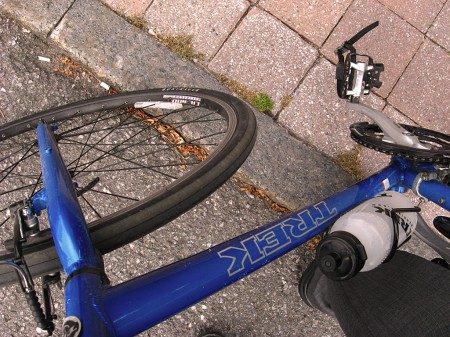While both John McCain and Barack Obama have endorsed a national cap-and-trade system as the centerpiece of their climate policies, the two proposals differ on several highly important grounds. The most important by far is the mechanism of permit allocation. Under the McCain system, permits to emit carbon would be granted for free to those with existing records of emissions; under the Obama system, all those wishing to emit will be required to buy permits at auction. The practical differences between the approaches are massive. Under the auction system, those who wish to pollute are made to pay. Under the free allocation system, those who have polluted in the past are granted valuable credits that they can either use to pollute or sell for cash.
As described before, consumers experience price rises in either scenario. What differs is where the windfall accrues. Under an auctioning system, it ends up in the hands of government, which can use it to fund low-carbon investments or refund it to the population as a hole (as in a cap-and-dividend system). Under a free allocation system, it simply goes into the coffers of the biggest polluters.
Even with a Democratically-controlled Congress and Senate, getting a plan based on 100% auctioning approved would be very challenging. Democrats from areas where extractive industries and automobile manufacture are economically important and politically powerful will resist policies that will be costly to dirty industries. That being said, it is arguably wiser to start with a policy position that is stronger than can probably be enacted and then compromise, rather than starting with a position that is weaker than necessary to get the job done.


Wall Street sees national carbon market at least five years away (09/11/2008)
Nathanial Gronewold, ClimateWire reporter
NEW YORK — Pessimism is beginning to creep its way into the hearts and minds of players in the U.S. carbon market as credit generators and traders take a closer look at the political climate for climate change legislation in Washington.
While almost everyone still expects the federal government to eventually develop a nationwide carbon emissions cap-and-trade system that covers most of the economy, greater uncertainty is building about what that eventual scheme will look like and how effective it will be. While the industry had anticipated 2012 as the start date for federal cap-and-trade, most now see that timeline as unrealistic.
“We’re really uncertain what’s going to replace Lieberman-Warner,” Lou Pai, managing director of Element Markets, told his industry cohorts at a gathering here Wednesday. “We don’t know what will happen in a new regime. … It’s very much up in the air.”
Lai and others now believe that a compliance carbon market can only come online in the United States by 2013 at the earliest, with 2014 and even 2015 as new probable dates the industry is considering. The international Kyoto Protocol agreement expires at the end of 2012, and nations are busy negotiating its successor.
Given the difficulty markets are having with recovering from the fallout of the housing market bust and the credit crunch, Wall Street has high hopes for carbon. Experts see a market for carbon dioxide allowances and emission reduction credits eventually developing into the world’s largest commodities exchange, rivaling oil trading. Estimates suggest that the size of a U.S. allowance market could be triple that of the European Union’s Emission Trading Scheme (ETS). The potential for investment banks, brokerages and exchanges is huge.